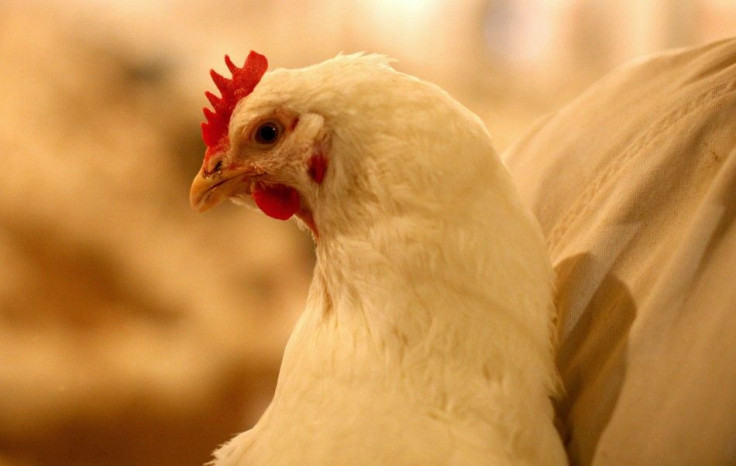Banned Antibiotics May Still Be Administered To U.S. Poultry

Poultry in the United States is still being fed a prohibited antibiotic, despite the 2005 Federal Drug Administration ban on fluoroquinolones from being using in poultry over concerns that it was a driving force behind antibiotic-resistant bacteria.
Fluoroquinolones are frequently prescribed to humans under names such as Aelox, Cipro and Levaquin to treat bacterial infections. However, its use in poultry was increasing the antibiotic-resistance of Campylobacter, a bacterium that causes fever, abdominal cramps and bloody stools, according to the FDA.
Researchers analyzed feather meal, a poultry byproduct that is commonly added to animal feed, and found fluoroquinolones in eight of 12 samples taken from across the country.
The discovery of certain antibiotics in feather meal strongly suggests the continued use of these drugs, despite the ban put in place in 2005 by the FDA, David Love, study coauthor and researcher at the John Hopkins Bloomberg School of Public Health, said in a statement. The public health community has long been frustrated with the unwillingness of FDA to effectively address what antibiotics are fed to food animals.
The researchers also pointed to flourishing fluoroquinolone-resistant Campylobacter as evidence that the antibiotic is still widely used.
With such a ban, you would expect a decline in resistance to these drugs, Keeve Nachman, study coauthor and director of the Farming for the Future Program, a John Hopkins program that documents the impact of agricultural practices, said in a statement. The continued use of fluoroquinolones and unintended antibiotic contamination of poultry feed may help explain why high rates of fluoroquinolone-resistant Campylobacter continue to be found on commercial poultry meat products over half a decade after the ban.
But the National Chicken Council accused the researchers of bad science, and said that modern testing is extremely sensitive and can detect the accumulation of something that hasn't been used in years.
This is one explanation for why fluoroquinolones, which were banned in 2005 by the FDA and not used today in poultry production, could have been detected in extremely low levels in this study, the organization said in a statement. The top priority for America's chicken farmers and processors is to raise healthy, top quality birds, because doing so is not only an ethical obligation, it is the foundation of a safe and wholesome chicken supply.
When asked what could have led to the positive tests for antibitoics, Tom Super, vice president of communications for the National Chicken Council, said very old residues [and] cross contamination or questionable source of feather meal.
Nachman said the FDA needs to tighten the regulations on animal feed.
We strongly believe that the FDA should monitor what drugs are going into animal feed, Nachman told HealthDay. Based on what we've learned, I'm concerned that the new FDA guidance documents, which call for voluntary action from industry, will be ineffectual. By looking into feather meal, and uncovering a drug banned nearly six years ago, we have very little confidence that the food animal production industry can be left to regulate itself.
The FDA did not respond to a request for comment.
The study was published in the journal Environmental Science & Technology.
© Copyright IBTimes 2024. All rights reserved.





















